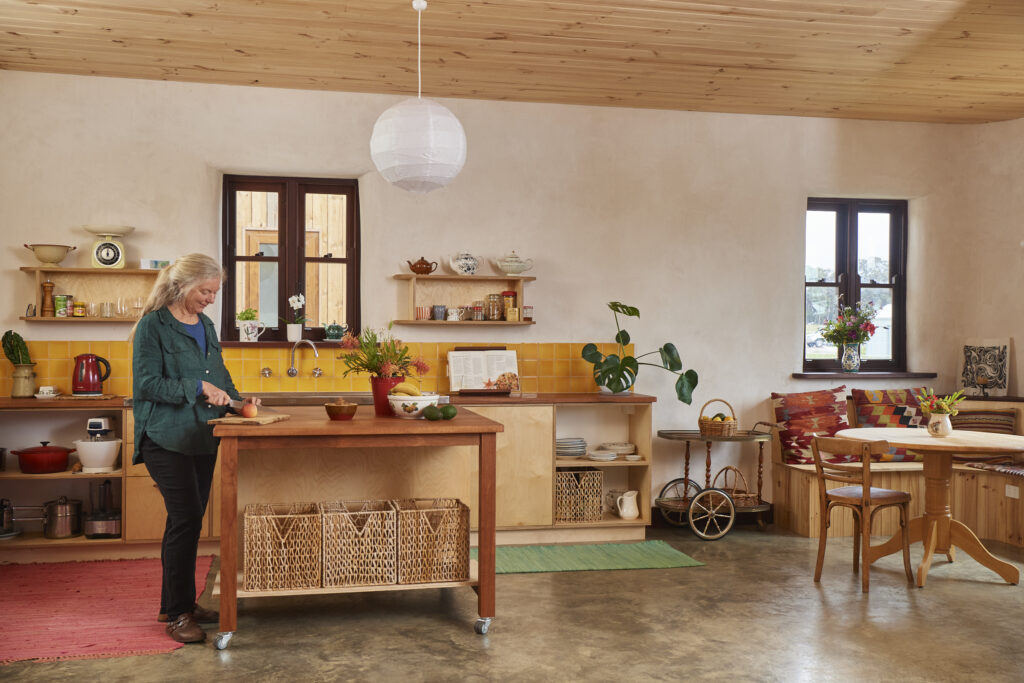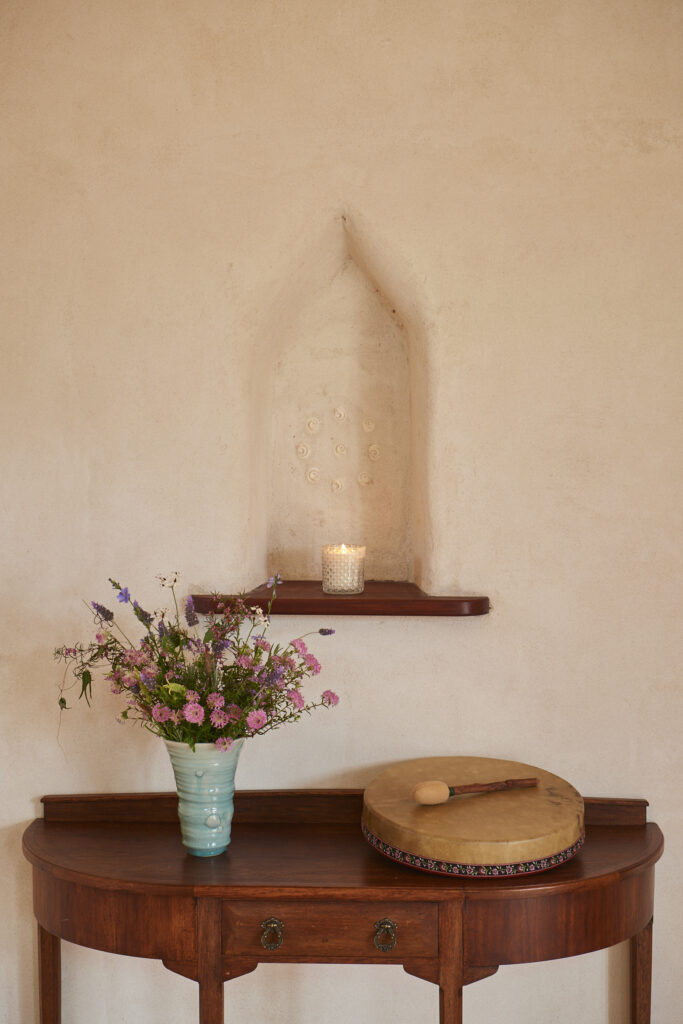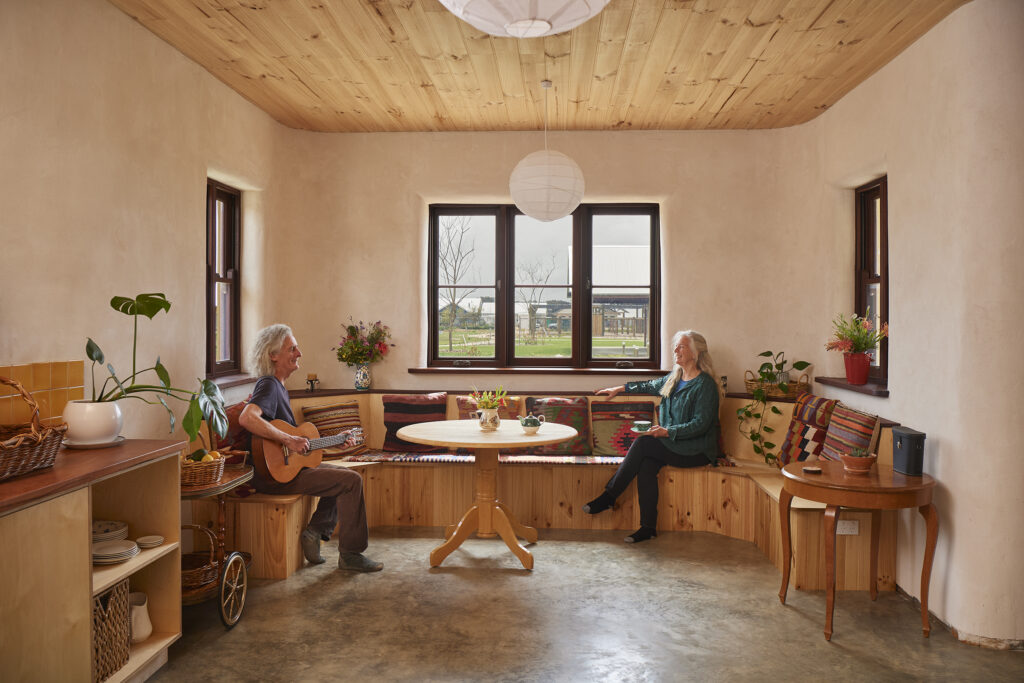Following the great success of Sustainable House Day in the Ecovillage, with so many visitors getting the rare opportunity to experience the many different types of sustainable homes in the Ecovillage, we thought it would be a good idea to write an article in each our newsletters featuring the various types of house construction methods being used to build our highly efficient and thermally comfortable homes.
As Tim & Ann-Marie’s beautiful strawbale home in Cluster 1A achieved the best thermal results on our day of assessment in the February 2024 heatwave, we thought we should start with some great facts about what makes a strawbale home so sustainable, efficient and appropriate for building in the South West.
We have some absolutely stunning Strawbale homes in the Ecovillage and another four under construction at present. If you’re interested in building a Strawbale home in the Ecovillage we can recommend a couple of excellent builders, and there is even a beautiful completed strawbale home available for purchase right now.
STRAWBALE HOME FACTS
Strawbale homes are usually built using double framed timber (plantation pine) trusses that are incredibly strong, durable, carbon negative and sustainable. The straw is actually a waste product, i.e. once the wheat grain has been harvested, the stalks become a disposal problem for farmers as, unlike hay, it can’t be used for feed. Most straw is simply burned at the end of the season, which adds significant carbon and dangerous particulates to the atmosphere.
Using straw for building therefore reduces air pollution and stores carbon. It is also biodegradable and excellent mulch, so the straw left over from building can be used as on new gardens around the home—or in the case of the Ecovillage, straight onto the veggie patch!
Straw is a highly renewable product. It is a by-product which is regrown each year, with a 6 months’ growth cycle, instead of the decades it can take to grow trees for producing lumber. Harvesting the straw also requires very little energy and the bales cost less to transport than wood, concrete, or steel thanks to their lighter weight. Importantly, there is a farmer in the Boyanup Brook region who bales straw specifically for strawbale homes and can deliver to the Ecovillage.
As a byproduct of the wheat industry that is essentially being diverted from being burnt, strawbales also have a low-embodied energy. One tonne of concrete requires more than 50 times the amount of energy in its manufacture than a tonne of straw. The only energy needed to make a strawbale is in the baling process and the transportation to the building site. One of straw’s primary values is as an insulating material that enables homes to use less energy and have lower greenhouse gas emissions over the building’s life. More on this below.


Healthy Homes
Strawbales also contain fewer toxins than most other conventional building materials. This can make them healthier alternatives to use in construction. Strawbale walls have good breathability, thermal mass and insulation allowing air to slowly permeate the structure without moisture penetration. Strawbales themselves have very low thermal mass, being composed, by volume, mostly of air. However, the cement and earth renders used on strawbales result in finished walls having appreciable thermal mass in the masonry ‘skins’ either side of the insulated straw core.
In climates such as ours, where heating and/or cooling of the home is often essential for comfort due to poorly designed and insulated homes, strawbale insulation is the most effective and cost efficient.
The Ecovillage Building Design Guidelines require a minimum wall insulation of R2.7, however, a typical strawbale wall has an R value greater than 7, and usually around 11! Straw has a similar insulation value to fibreglass batts for the equivalent thickness, but is much cheaper and a lot lower embodied energy (even though fiberglass batts use recycled glass).
Sound Insulation
Strawbales provide cost-effective sound insulation, which contributes to the livability of this kind of construction. Walking into the space created by a strawbale structure, you can immediately appreciate the quietness and hear the difference from conventional buildings, strawbale creates very calm and relaxing spaces.
Low-Cost Living
As already noted, due to their high insulation factor, a well-designed solar passive home made from strawbales won’t require any heating in winter or cooling in summer. The material has a natural trombe effect, allowing it to store heat or coolness and release it to keep your home’s temperature comfortable. As mentioned in the Thermy Permie article in this newsletter, Tim and Ann-Marie’s beautiful strawbale home in Cluster 1A had an ambient temperature in their open plan kitchen dining and living room of 22C at midday on a 38C day, after a whole week of heatwave temperatures! It’s hard to beat that, especially when you know that the straw was grown locally and would have been burnt otherwise!

Low Fire Hazard
Despite what might seem logical, walls made from strawbales have proven to be more flame retardant than conventional wood frame construction. This is because the bales are wrapped in cement/lime/earth render and are densely baled which reduces airflow, and as we all know, fire needs oxygen!
Pest Resistance
A completed wall also has excellent resistance to pests, and the normal termite protect on measures required in the Building Codes are sufficient. The plaster or render over the bales is generally laid over a stainless-steel bird wire or fibre glass matting, which combined with the 25mm thick external render and internal plaster, is adequate to keep animals out.
Attractive Aesthetic

Strawbale homes have a variety of amazing aesthetic elements. Deep windows and niches are a favoured feature, often providing enough depth to function as a window seat or large shelf, with the option for stunning timber sills. In addition, the slightly uneven nature of strawbales gives the walls a warm and rustic feel. This adds an incredible aesthetic value to the home as thick walls are expensive to achieve with conventional construction. The thickness of the walls also helps to reflect sunlight allowing air to slowly permeate the structure without moisture penetration.
Find more information about strawbale here.

